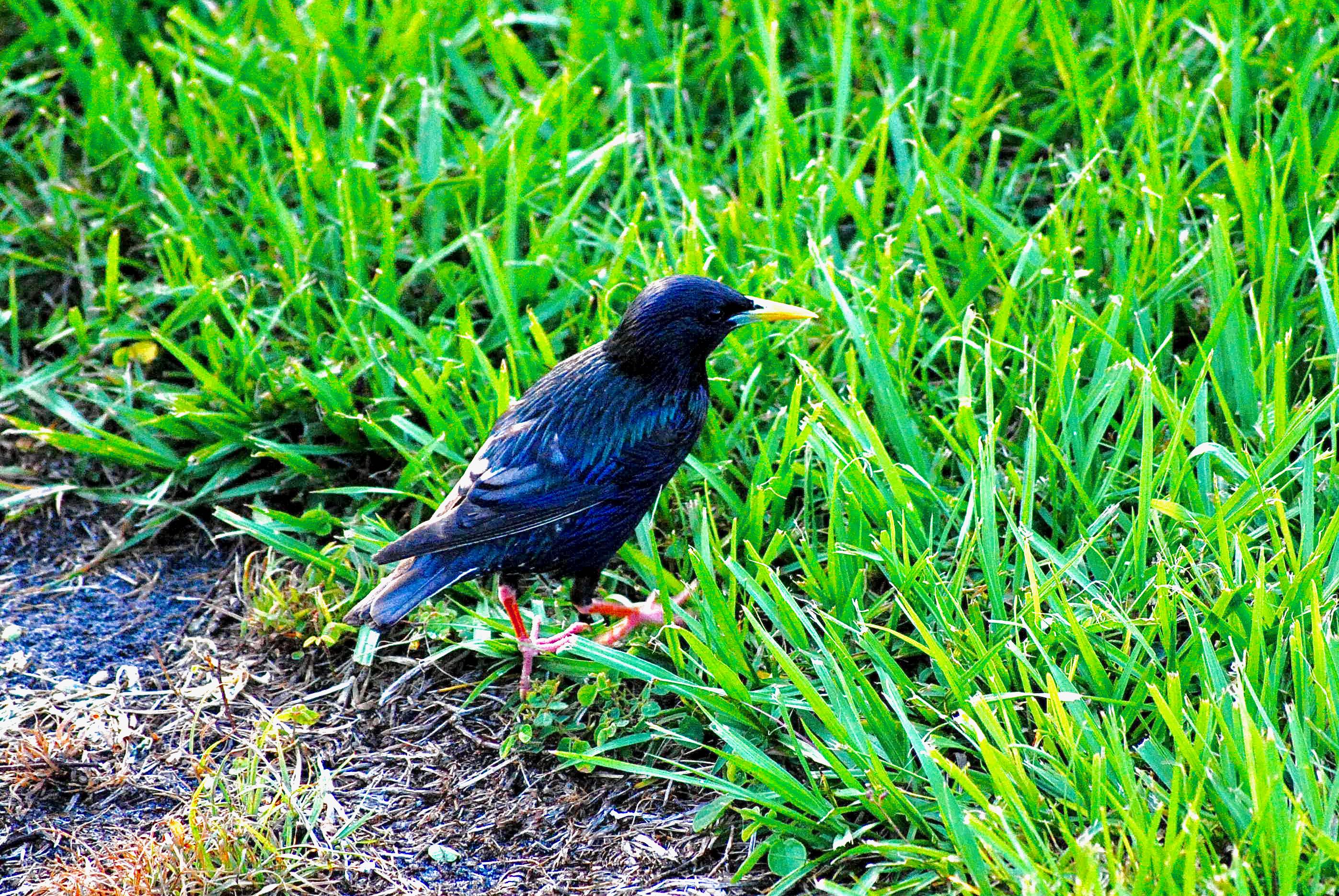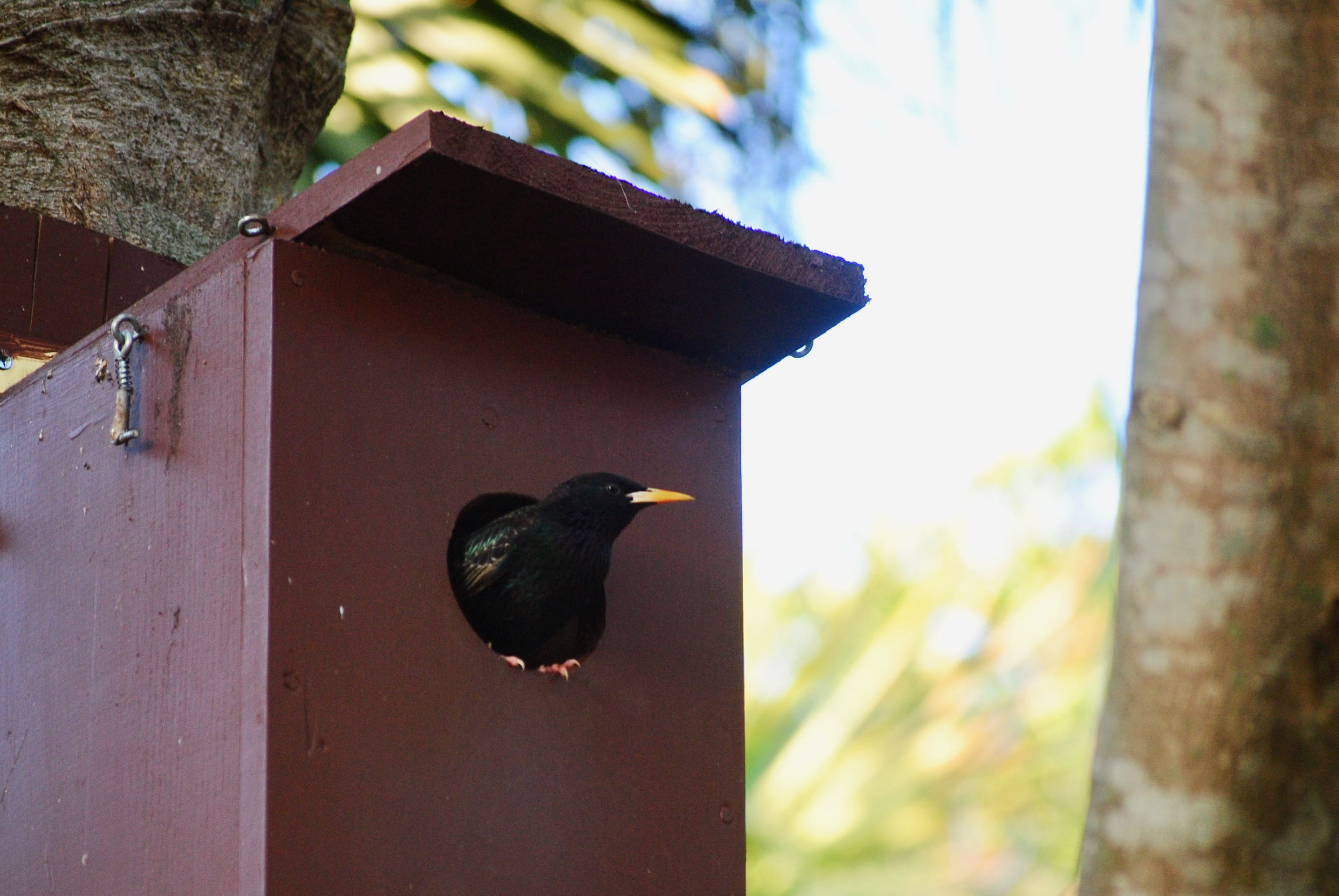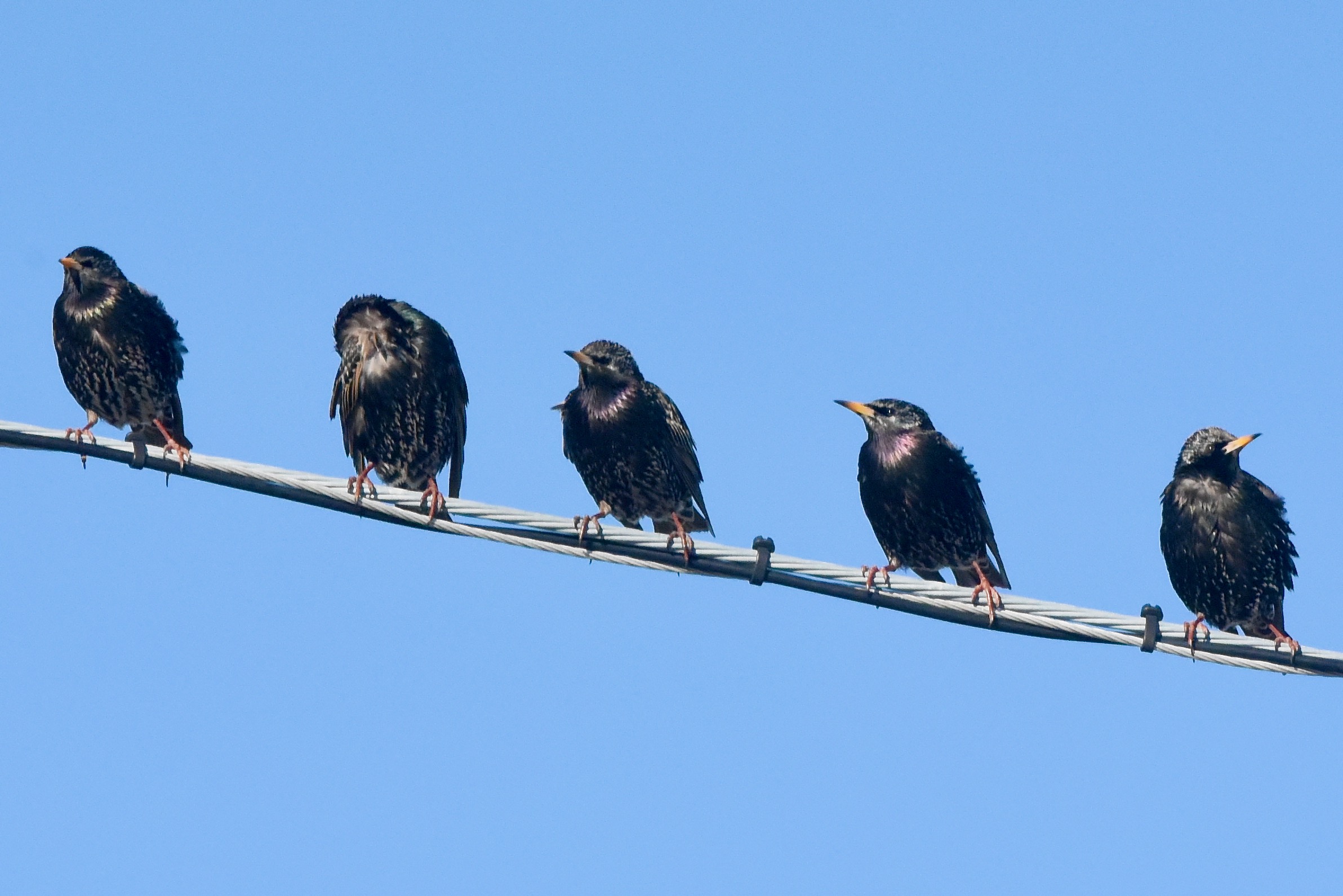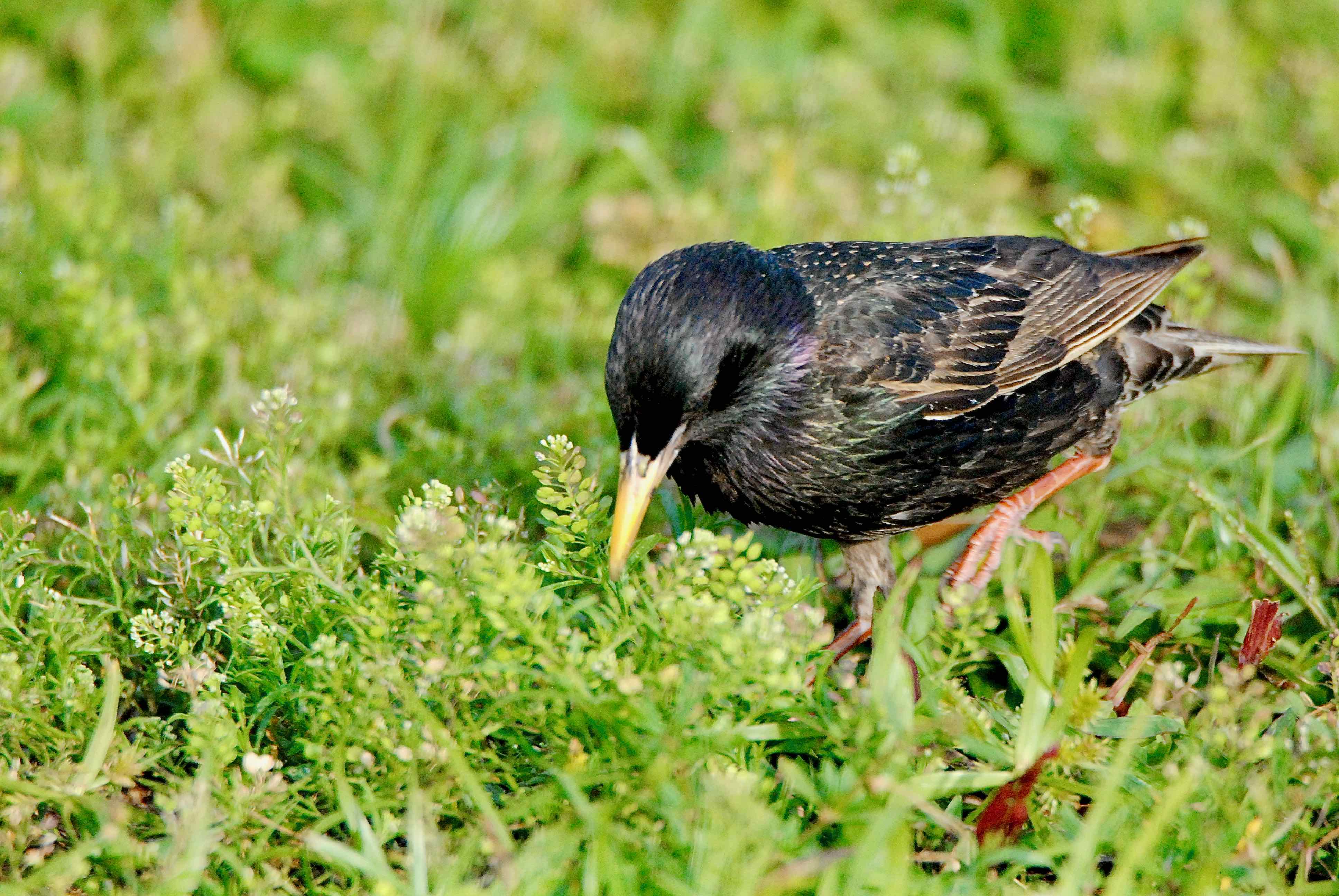
European Starling, photographed at Green Cay Nature Center, Boynton Beach, Palm Beach County, in May 2010.
We can thank, or blame, one man and a few Shakespeare enthusiasts for the presence of the European starling, Sturnis vulgaris. In 1890, these fans of Will imported 100 starlings from England and set them loose in Central Park, because they wanted the United States to have all the birds mentioned in Shakespeare's works.
The bird since then has spread to just about every nook and cranny of the U.S. and Canada, to Alaska and the Yukon to Florida. And Mexico. No matter where they live, however, they're all genetically similar to each other. The European starling has become a common sight in yards, on power lines and in trees, where it often competes with other birds for holes where it can nest. It will even take to nesting boxes, displacing more desired species like the purple martin.
At first glance, the most prominent feature of the starling is its bright yellow bill, but its feathers are iridescent purple-green, which, in the right light, are quite beautiful. In winter, however, the beak turns black, seen in the middle photo below, and the plumage becomes speckled.
As you might gather, this bird is a native of Europe, but it has been introduced to most parts of the globe. In the United States, it is nonmigratory, pretty much staying wherever it calls home the entire year, including Florida. It is a small bird, 7.5 to 8.5 inches long, with a wingspan of 12 to 15 inches. Starlings are related to the myna, and can mimic the songs of as many as 20 different birds. It lives in cities and in the 'burbs, on farms and in parks. Its diet includes bugs, fruit, grains, livestock feed and garbage. Gourmets they're not.
Starlings can flock in huge numbers — into the thousands at times. Scientists put the number of starlings in North America at 200 million. The starling population has been declining steadily over the the last half-century but they're hardly threatened with extinction.
Starlings are loud and aggressive birds that can annoy their feathered comrades and humans alike. Beyond that, when they gather in large numbers, they can create a real mess.
Starling nests are made of sticks and grass, with the inside lined with feathers and other finer material. Females lay four to six pale blue eggs. Female starlings also have been known to lay eggs in the nests of other birds.
In environmental terms, starlings are considered by many to be the perfect definition of an invasive species. They take nesting sites that normally would be used by native species, particularly sapsuckers. Others say the harm they do is overstated.
Starlings damage fruit crops, and steal grain. Their thieving ways are known to cause declines in milk production among dairy cows because of the loss of grain. Their feces can corrode buildings and cars; they carry salmonella. And the National Wildlife Research Center ranks starlings as the ninth-largest risk to aviation safety, causing 150 planes annually to abort takeoffs, shut their engines or make precautionary landings.
On the other hand, they've been known to reduce insect pests that harm crops. And, as small as they are, they were once considered a game bird in the Old World. One study done in 2003 found that the only native species hurt by the European starling's presence was the yellow-bellied sapsucker. Other species seemed to be holding their own against the aggressive invader.
Males select a nest site, almost always a cavity of some sort, and start construction before finding a mate. They'll use the site and song to attract a lady starling, who will put the finishing touches on the nest itself. Clutches are three to six eggs, incubated by both parents. Eggs hatch in less than two weeks; both parents feed the young, which will fledge in about three weeks.
European starlings are members of Sturnidae, the family of starlings and mynas. Because they are imports, European starlings are not protected under the Migratory Bird Treaty Act along with such notables as the rock pigeon, Eurasian collared dove and the house sparrow.
Green Cay Nature Center



